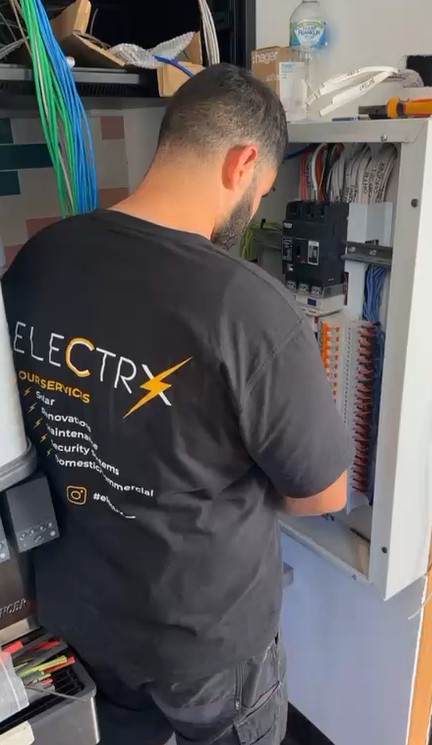Discover the Most Common Reasons Behind Your Circuit Breaker Tripping Frequently
When a circuit breaker consistently trips, it serves a crucial function in safeguarding your home from potentially hazardous electrical faults. This situation can frequently originate from several prevalent factors, such as overloaded circuits, short circuits, malfunctioning appliances, or concealed wiring issues. If you observe your breaker tripping repeatedly, it is imperative to identify the root cause and enlist the expertise of a qualified electrician to perform necessary repairs, thus ensuring that your home's safety and functionality are fully restored.

Step-by-Step Guide to Diagnosing the Causes of Your Circuit Breaker Tripping
If your circuit breaker turns off immediately after being reset, it indicates a problem within your electrical system. The breaker is effectively doing its job by cutting off power to prevent potential hazards or more significant issues. Addressing these situations promptly can help maintain the safety of your electrical system and avert further complications that could arise.
We frequently receive questions from homeowners in Werribee, Altona, and Point Cook regarding this concerning issue. While it can be quite frustrating, this phenomenon is often an early warning sign of more severe electrical problems that could pose risks if left unaddressed. Recognising the seriousness of the situation is essential for the safety of your home.
This article will delve into the various underlying causes of circuit breaker problems, provide practical troubleshooting steps you can undertake, and explain how Electrx can effectively tackle these electrical challenges.
How Circuit Breakers Function to Safeguard Your Home’s Electrical System
Circuit breakers act as automatic safety devices engineered to protect your home by interrupting power under specific conditions, such as:
- When excessive current flows through a circuit, resulting in an overload situation that could lead to overheating.
- In instances of short circuits that can lead to perilous electrical faults, endangering both property and lives.
- When there is power leakage to the ground, indicating an earth fault that could create hazardous conditions.
- If the breaker itself is faulty or nearing the end of its operational lifespan, increasing the risk of failure.
Unlike traditional fuses, circuit breakers react more swiftly to potential threats, offering a superior safety mechanism that does not rely on melting wires to halt the current flow, thereby ensuring a safer environment for your family and property.
Uncovering the Reasons Why Your Circuit Breaker Won't Stay Reset
<pIf you find yourself resetting the breaker only for it to trip again almost immediately, this indicates that there is an active fault present on that specific circuit. Understanding the common causes can empower you to diagnose the issue effectively and take appropriate action.
The primary issues that often lead to this situation include:
Understanding Overloaded Circuits: A Common Electrical Dilemma
Overloaded circuits represent a frequent electrical issue, particularly when multiple high-draw devices, such as kettles, toasters, or heaters, are operated simultaneously on the same circuit. The cumulative load can easily exceed the safe capacity, prompting the circuit breaker to trip as a protective measure against overheating and potential fire hazards that could endanger your home and loved ones.
Assessing If Faulty Appliances Are Contributing to Your Circuit Breaker Issues
In certain situations, the origin of the problem may lie with the devices plugged into the circuit rather than the wiring itself. Appliances such as heaters, older refrigerators, and dryers are often frequent offenders; internal faults in these devices can lead to short circuits or current leakage, causing the breaker to trip unexpectedly and creating a significant inconvenience.
The Dangers Linked to Short Circuits and Their Causes
Short circuits occur when damaged wiring, rodent infestations, or crushed insulation allow live wires to make contact with the earth or neutral wires directly. This condition can trigger the circuit breaker to trip rapidly to prevent hazardous outcomes that could pose serious risks to your property and safety, highlighting the importance of addressing these issues promptly.
The Significance of Understanding Earth Leakage and Its Implications
Moisture infiltration in outdoor outlets, garden lighting setups, or under-house cabling can create conditions conducive to current leakage into the ground. This scenario can cause Residual Current Devices (RCDs) to trip as a precautionary measure, ensuring the safety of your electrical system and preventing potentially dangerous situations that could affect your home and family.

Essential Actions to Take When Your Circuit Breaker Trips
- Unplug all devices connected to the outlets on the affected circuit to eliminate any potential source of overload that could lead to further issues.
- Reset the circuit breaker by flipping it back to the ‘on' position, allowing you to assess whether the problem persists.
- If the breaker remains active, begin plugging your devices back in one at a time to identify the source of the problem, thus narrowing down the potential causes.
- When the breaker trips again, you will have pinpointed the faulty device that requires further inspection or replacement, ensuring your safety.
- If the breaker continues to trip even with no devices connected, it is time to reach out to our team for professional assistance to investigate the underlying issue.
Utilise our Fault Finding Service to receive a thorough and prompt diagnosis of your electrical issues, ensuring your safety and peace of mind while maintaining the functionality of your home.
Recognising the Right Moment to Cease Resetting Your Circuit Breaker
If your circuit breaker frequently trips or refuses to reset altogether, you should take the following precautions to prevent further complications:
- Do not keep resetting the breaker—this action can place excessive stress on the entire electrical system, leading to further complications and potentially hazardous situations.
- Avoid swapping breakers between different circuits, as this practice may cause additional issues and complicate the existing problem.
- Do not attempt to replace the breaker yourself—this is not only against the law but also poses significant safety risks to you and your home, potentially leading to dangerous situations.
We have witnessed numerous cases where DIY resets have resulted in damaged boards or even house fires. Trust our experienced professionals to safely and effectively trace the underlying issue and provide a reliable solution that protects your home.
The Comprehensive Process When Electrx Addresses Your Circuit Breaker Issues
When our dedicated team at Electrx responds to a reported circuit breaker fault, we conduct a comprehensive assessment that includes the following steps:
- Testing the circuit using specialised clamp meters and insulation testers to ensure safety and reliability throughout the electrical system.
- Inspecting all outlets, fittings, and switchboard connections for any signs of irregularities or wear that could compromise safety.
- Examining appliances that may be contributing to the fault for potential internal issues that could lead to further problems.
- Replacing the circuit breaker or RCD if we determine it has failed during our assessment, ensuring the integrity of your electrical system.
- Repairing any damaged cabling or terminals that pose a safety risk to your electrical system, thereby enhancing overall reliability.
- Issuing a Certificate of Electrical Safety upon the successful completion of our work, ensuring compliance with safety standards and regulations.
If your switchboard is outdated or lacks sufficient safety switches, we may also recommend a Switchboard Upgrade to enhance safety standards and protect your home effectively, providing you with peace of mind.
Understanding the Lifespan of Circuit Breakers and Recognising Signs of Failure
Indeed, circuit breakers, like any mechanical device, possess a finite lifespan. If your breaker is tripping excessively or does not reset smoothly, it may indicate a fault that requires immediate attention from a qualified professional.
Signs that your circuit breaker may be on the brink of failure include:
- Feeling hot or loose to the touch, indicating potential overheating that could lead to significant issues.
- Tripping without any apparent cause, suggesting underlying issues that need to be addressed swiftly.
- Requiring significant effort to reset, a clear sign of malfunction that could compromise safety.
- Flipping even when there is no load connected, pointing to possible internal faults that must be inspected immediately.
We maintain a selection of modern, compliant replacements readily available and can promptly replace faulty breakers to ensure the safety and reliability of your electrical system, providing assurance for your home.

Your Circuit Breaker Questions Answered: FAQ
Can I legally replace my circuit breaker myself?
No, according to Victorian law, only a licensed electrician is authorised to safely and legally replace circuit breakers in residential settings, ensuring compliance with safety standards.
Why does my circuit breaker trip when I operate the heater?
Heaters typically draw a significant amount of current. If they are sharing a circuit with other high-power devices, this can lead to an overload situation, causing the breaker to trip as a protective measure to safeguard your electrical system.
Can a faulty outlet cause my circuit breaker to trip?
Yes, damaged or melted outlets can short internally, leading to the breaker tripping each time the circuit is energised, which can create hazardous conditions that must be addressed.
Is this a situation that requires immediate attention?
Absolutely, especially if the breaker fails to reset, affects critical appliances, or shows signs of burning or overheating that could pose serious risks to your property and safety.
Final Thoughts on Circuit Breaker Issues and Effective Solutions
When circuit breakers trip, it is essential to understand that they do so for specific reasons. If your breaker fails to remain reset, it is vital not to dismiss this warning, as the underlying issue could reside within your wiring, appliances, or the switchboard. Electrx is well-equipped to identify and resolve these concerns swiftly and efficiently.
We will handle all necessary repairs to ensure your system operates safely and reliably, maintaining its dependable performance for your peace of mind.
Reach out to us for expert assistance with Melbourne Switchboards and all your electrical needs.
Circuit Breaker Keeps Tripping or Won’t Stay Up? Here’s What It Means
The Article: Circuit Breaker Tripping? Discover What It Means first appeared on https://writebuff.com
The Article Circuit Breaker Tripping Explained: What You Need to Know Was Found On https://limitsofstrategy.com



It’s interesting how often we take the functionality of our circuit breakers for granted until an issue arises. I recently faced a similar situation where my breaker was tripping almost weekly. At first, I assumed it was due to an overloaded circuit, especially since I had multiple devices running during the chilly winter months. However, after doing some research and consulting an electrician, I learned that the problem could stem from something as simple as malfunctioning appliances. In my case, it turned out to be a faulty heater that was drawing excessive current, leading to the trips, which could have posed a fire risk if left unattended.